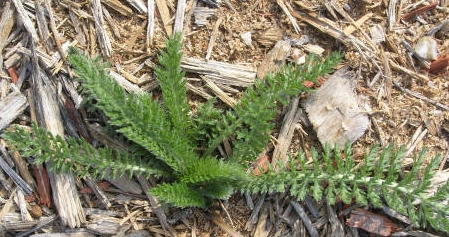The Monthly Wort
________________________
The Monthly Wort will provide readers with detailed descriptions of specifically chosen herbs (aka “wort”, meaning a useful herb), splitting it into 4 categories over the span of the month. Herbal History, Medicinal Uses, Magical Uses and Growing/Harvesting. In order to get the full scope of each plant, stay tuned every week as we delve into spiritual and practical experience of Herbalism.
Achillea Millefolium is a member of the Asteraceae (Compositae) plant family that has been popularly known for its use since the Middle Ages. But history will date it back further, where it was found in Neanderthal burial caves some 60,000 years ago, suggesting a much longer use before standardized medicine. It was introduced to North America by early colonists and became a valued remedy used by many indigenous tribes. American Shakers gathered it for numerous natural remedies.
The centaur Chiron and Achilles. Yarrow grows at the tip of his spear.
What is Yarrow?
Yarrow’s Namesake
Its genus name was intentionally coined after the mythical hero, Achilles, who reportedly used yarrow to treat battle wounds, as was taught to him by the centaur Chiron. Millefolium is a literal Latin translation of “a thousand leaves“.
The English name “yarrow” comes from the Saxon (Old English) word gearwe, which is related to both the Dutch word gerw and the Old High German word garawa. Other nicknames are devil’s nettle, knight’s milfoil, nosebleed, old man’s mustard, thousand leaf, woundwort, and several more. There is a similar native American variety called A. Millefolium var. lanulosa.
Yarrow is a must-have for any witch or healer’s garden based on its variety of uses, not to mention its appealing aesthetic. Yarrow is a perennial known throughout Europe, as well as Asia and North America, and it is a very stubborn plant. People unfamiliar with it might consider it a weed based on its quick growth and persistence. It can grow up to 3 feet (1 meter) high and is distinguishable by its feathery, fern-like leaves, which grow from their creeping roots for the first few seasons. Once it is established, it will shoot up long stems topped with clusters of small, white flower heads. (Side note: It can be found in a variety of colors, including pink, yellow, red or gold, however the white is used the most in herbal medicine). When crushed, the leaves are extremely aromatic and have a distinct spicy smell, often compared to many cooking herbs like dill or parsley. The stems and leaves are also be wooly or fuzzy, especially along the stems (known as pubescence).
Mature Yarrow leaves (EOL.com) are multi-pinnate and grow alternately.
The root system has a spreading rhizomatous grown form, or shooting roots, meaning that it does not solely replicate via seed spread; if uprooted, the plant can be divided among several stolon and grown separately as individual entities. This is what makes it such a tenacious grower. It is hardy as hell and survives in most places, both wet and dry, including high desert (it grows like mad up here near the Rockies), roadsides, meadows, fields and coastal places.
Author’s Note: Remember that yarrow has a lot of look-alikes! It can be misidentified with poison hemlock/water hemlock, tansy, queen anne’s lace and others! Always be certain of what you are looking at before you touch, smell or ingest, and don’t be afraid to reference an experienced herbalist or researched text.
- Yarrow, nothing if not consistent -
Throughout history, yarrow has generally maintained consistent use as a healing herb. Civil War soldiers used it the same way as the ancient centuries, and there are stonecutters and carpenters that still utilize its quick-action qualities. It is also recorded that Lewis and Clark collected yarrow during their expedition while they were camped near Kamiah, Idaho in 1806. The American Encyclopedia even claims that it was used in first aid as recently as World War I (1914-1918).
I myself have used it “in the field” while up in the mountains, when my nose began to bleed from the dry air. There was plenty of yarrow growing around me, so I picked a leaf, chewed it a bit to release the oils, and stuffed it up a nostril. The effectiveness was, frankly, astonishing. Even as a practicing herbalist, I was so amazed with its near immediate results! I am a large advocate for having it any first aid kid, all-natural or otherwise.
- You mean I can have my yarrow and eat it too? -
The yarrow plant is also a wonderful addition to food! The leaves are chopped up and used in soups, meat dishes and stir frys. It is especially helpful in masking the fishy flavors of seafood. In the middle ages, yarrow was part of an herbal mixture known as gruit, which was used to flavor beer before the use of hops. There are some liquors and bitters that also include yarrow.
In today’s modern age, yarrow has a following as one of the popular herbs in natural wellness and can be found at most health food stores, herbal shops and local nurseries (potted or seeds). If you continue to follow yarrow’s spotlight in the Monthly Wort (the monthly showcasing of herbs like this) for the next three weeks, you will find out just how useful - magically and practically - yarrow is! And you’ll also find out just how easy it is to grow!
Stay tuned!








